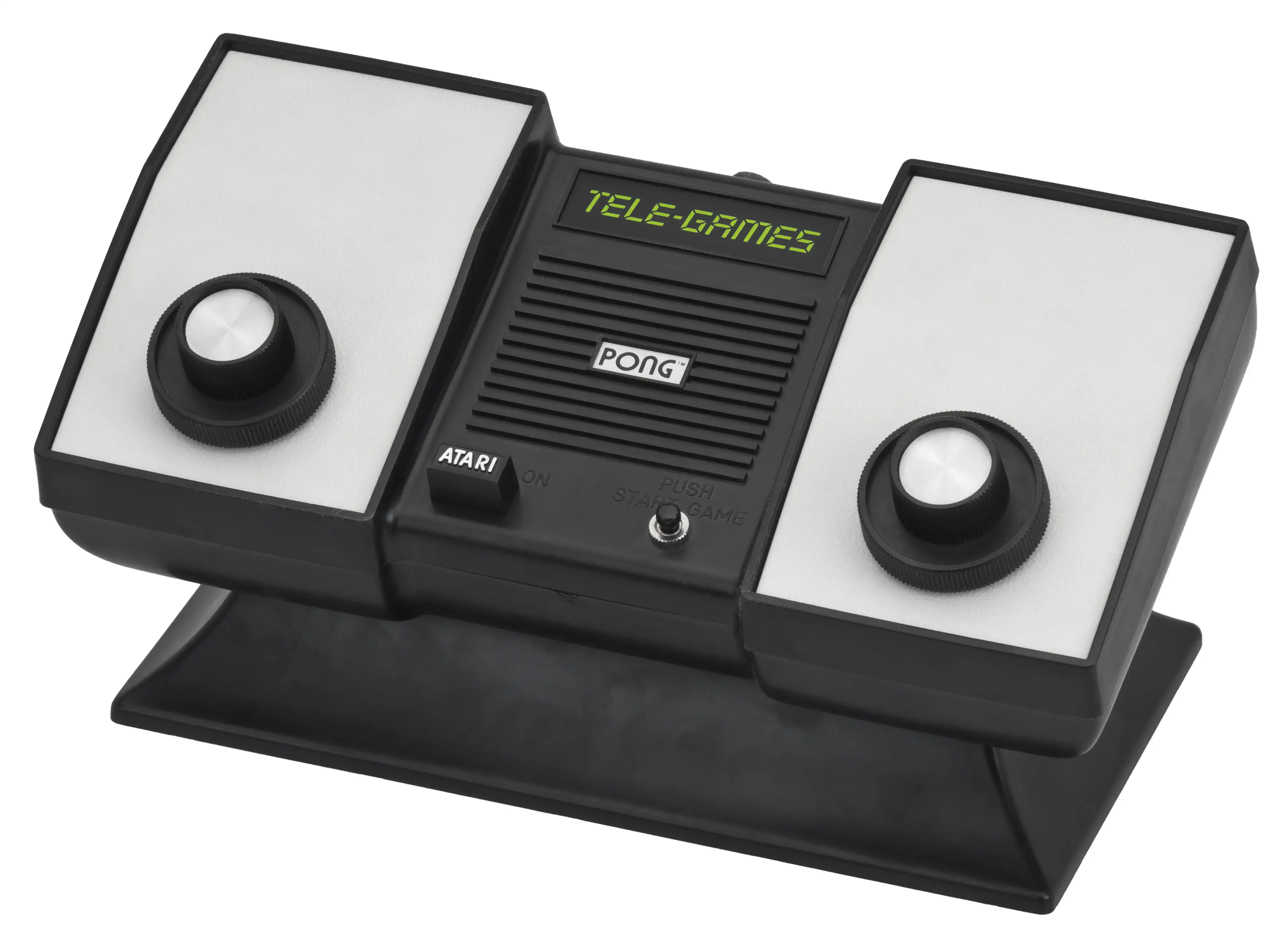Telegames Pong
The telegames pong console is a straight clone of the original Pong video game, produced and released by Telegames, Inc., a video game and electronic entertainment company in the United States.
In the early days of the video game industry, intellectual property rights were not as well-defined as they are now. As a result, many clones and copies of pong-style games entered the market, inspired by the success of the original Atari Pong game.
The history of Pong

Pong itself was based the concept on the electronic ping-pong game that was included in the Magnavox Odyssey, causing the Magnavox company to sue Atari for patent infringement.
In 1974, Atari engineer Harold Lee proposed a home version of Pong that would connect to a television: Atari Home Pong. The system began development under the codename Darlene, named after an employee at Atari. Alcorn worked with Lee to develop the designs and prototype and based them on the same digital technology used in their arcade games. The two worked in shifts to save time and money; Lee worked on the design's logic during the day, while Alcorn debugged the designs in the evenings. After the designs were approved, fellow Atari engineer Bob Brown assisted Alcorn and Lee in building a prototype. The prototype consisted of a device attached to a wooden pedestal containing over a hundred wires, which was eventually be replaced with a single chip designed by Alcorn and Lee; the chip had yet to be tested and built before the prototype was constructed. The chip was finished in the latter half of 1974, and was, at the time, the highest-performing chip used in a consumer product.
Bushnell and Gene Lipkin, Atari's vice-president of sales, approached toy and electronic retailers to sell Home Pong, but were rejected. Retailers felt the product was too expensive and would not interest consumers. Atari contacted the Sears Sporting Goods department after noticing a Magnavox Odyssey advertisement in the sporting goods section of its catalog. Atari staff discussed the game with a representative, Tom Quinn, who expressed enthusiasm and offered the company an exclusive deal. Believing they could find more favorable terms elsewhere, Atari's executives declined and continued to pursue toy retailers. In January 1975, Atari staff set up a Home Pong booth at the American Toy Fair (a trade fair) in New York City, but was unsuccessful in soliciting orders due to high price of the unit.
While at the show, another meeting was aranged with Quinn to obtain a sales order. Quinn needed approval from the Sporting Goods department and suggested Atari demonstrate the game to executives in Chicago. Alcorn and Lipkin traveled to the Sears Tower and, despite a technical complication in connection with an antenna on top of the building which broadcast on the same channel as the game, obtained approval. Bushnell told Quinn he could produce 75,000 units in time for the Christmas season; however, Quinn requested double the amount. Though Bushnell knew Atari lacked the capacity to manufacture 150,000 units, he agreed. Atari acquired a new factory through funding obtained by venture capitalist Don Valentine. Supervised by Jimm Tubb, the factory fulfilled the Sears order. The first units manufactured were branded with Sears' "Tele-Games" name. Atari later released a version under its own brand in 1976.
Game play
Pong is a two-dimensional electronic game that simulates the game of table-tennis. The player controls an in-game paddle by moving it vertically across the left or the right side of the screen. Players can compete against another player controlling a second paddle, or the computer. The goal is for each player to reach eleven points before the opponent does, points are earned when the opponent fails to return the ball.



